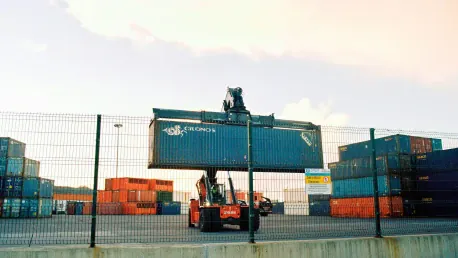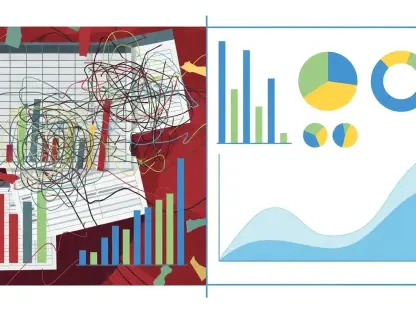In the modern interconnected global economy, disruptions—whether due to geopolitical tensions, natural disasters, or economic fluctuations—can have significant repercussions across various industries. Particularly in the packaging industry, where timely deliveries and resource availability are critical, stability in the supply chain is paramount. Businesses must adopt proactive measures and adaptive strategies to ensure their supply chains remain resilient in the face of such challenges. A stable supply chain not only enhances continuity and efficiency but also strengthens a company’s competitiveness in the market.
Risk Management and Diversification
Conducting Regular Risk Assessments
For businesses in the packaging industry, one of the foundational steps to achieve supply chain stability is conducting regular risk assessments. These assessments play a crucial role in identifying potential vulnerabilities within a company’s supply chain. A thorough risk assessment involves analyzing several factors, including the reliability of suppliers, geopolitical risks, and potential environmental disruptions. By understanding the weaknesses within the supply chain, companies can develop strategies to mitigate these risks effectively.
Regular risk assessments enable businesses to anticipate and prepare for unforeseen challenges. For instance, a supplier’s reliability can be impacted by a myriad of factors such as political instability, economic downturns, or natural disasters. By evaluating these risks periodically, businesses can respond proactively, ensuring that their operations remain uninterrupted. Ultimately, a comprehensive risk assessment framework is indispensable for fortifying the supply chain against potential disruptions and maintaining overall operational stability.
Importance of Supplier Diversification
The COVID-19 pandemic starkly revealed the dangers of over-relying on a single supplier or geographic region. Many companies faced dire disruptions due to their dependence on singular sources for critical components. Supplier diversification emerges as an essential strategy to bolster supply chain stability. By sourcing materials from multiple suppliers and various geographic regions, businesses can significantly reduce their dependency on any single source, thereby minimizing the risk of supply chain disruptions.
Supplier diversification involves identifying alternative suppliers who can provide the necessary materials and components. This strategy ensures that if one supplier faces difficulties, other suppliers can step in to cover the shortfall. Businesses should not only diversify geographically but also across different tiers of suppliers to further enhance resilience. Additionally, cultivating strong relationships with multiple suppliers can lead to improved communication and flexibility in handling disruptions. Therefore, supplier diversification is a critical component of a robust supply chain strategy, safeguarding against unforeseen challenges and ensuring continuity in operations.
Leveraging Technology for Resilience
Predictive Analytics and Machine Learning
The integration of advanced technologies such as predictive analytics and machine learning can revolutionize supply chain management. These technologies enable businesses to forecast potential disruptions by analyzing large datasets and identifying patterns that may signal future challenges. Predictive analytics can project demand fluctuations, supplier lead times, and transportation delays, allowing companies to take preemptive actions to mitigate risks and optimize operations.
Machine learning algorithms continuously refine their predictions by learning from new data, improving their accuracy over time. This capacity for self-improvement makes machine learning an invaluable tool for dynamic supply chain management. For instance, predictive models can alert businesses to potential disruptions caused by recurring weather patterns, geopolitical tensions, or economic shifts. By leveraging these insights, companies can implement contingency plans, adjust inventory levels, and ensure timely deliveries. The proactive use of predictive analytics and machine learning thus plays a vital role in enhancing supply chain resilience and ensuring stable operations.
Blockchain and IoT Integration
Blockchain technology and the Internet of Things (IoT) are transformative in enhancing supply chain transparency and efficiency. Blockchain’s decentralized ledger system ensures that every transaction and movement within the supply chain is recorded and verifiable, thereby reducing the chances of fraud and errors. This transparency is crucial for maintaining trust among stakeholders and ensuring the integrity of the supply chain. By leveraging blockchain, businesses can trace the origin of materials, verify supplier credentials, and ensure compliance with regulatory standards.
IoT devices further augment supply chain operations by enabling real-time tracking of shipments and assets. Sensors embedded in products and transportation vehicles provide continuous data on location, temperature, and condition. This real-time monitoring allows businesses to anticipate and address potential delays, optimize transportation routes, and manage inventory more effectively. The integration of blockchain and IoT thus enhances the visibility and control over the supply chain, enabling businesses to respond swiftly to disruptions and maintain operational continuity.
Collaboration and Sustainable Practices
Building Strong Supplier Relationships
Effective collaboration and building strong relationships with suppliers, logistics partners, and regulatory bodies are instrumental in achieving supply chain stability. Strong supplier relationships foster open communication and trust, which are essential for anticipating and managing disruptions. By collaborating closely with suppliers, companies can develop mutually beneficial agreements that provide flexibility during crises and ensure continuous supply of materials.
Further, collaborative planning, forecasting, and replenishment (CPFR) frameworks enable enhanced data sharing between partners, resulting in improved demand forecasting and inventory management. These frameworks facilitate joint decision-making and resource sharing, reducing inefficiencies and enhancing overall supply chain performance. Additionally, close collaboration with regulatory bodies ensures compliance with industry standards and minimizes the risk of legal complications. Thus, fostering strong and transparent supplier relationships is a strategic imperative for maintaining a resilient and stable supply chain.
Adopting Eco-Friendly Practices
In today’s interconnected global economy, disruptions—whether caused by geopolitical tensions, natural disasters, or economic fluctuations—can have a profound impact across numerous industries. This is especially true for the packaging industry, where the timely delivery of products and the availability of resources are essential. Stability in the supply chain is crucial for maintaining smooth and efficient operations. Therefore, businesses must implement proactive measures and adaptive strategies to ensure their supply chains remain resilient despite such challenges. A stable supply chain not only boosts continuity and operational efficiency but also enhances a company’s competitive edge in the marketplace. By anticipating potential disruptions and planning accordingly, companies can better manage risks, minimize delays, and maintain customer satisfaction. In the long run, robust supply chain practices contribute to sustainability and long-term success, cementing the company’s position in a volatile global market.









